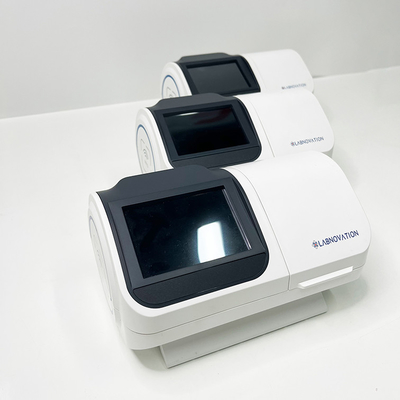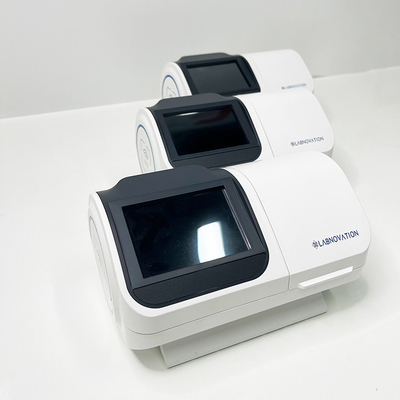POCT HbA1c Analyzer Bronate Affnity Fluorescence Quenching Principle For Glycosylated Hemoglobin Test
POCT HbA1c Analyzer Bronate Affnity Fluorescence Quenching Principle For Glycosylated Hemoglobin Test is intended for detecting glycoslated hemoglobin (HbA1c) in human blood.
According to the most recent IDF data, 537 million people—approximately 10% of all people aged 20-79 in the world—were living with diabetes as of 2021.
Specification
| Model |
LD-100 |
| Method |
Boronate Affinity |
| Measurement Time |
≤2 minutes |
| Sample Type |
Whole blood |
| Measurement Range |
4.0-15% |
| Sample Volume |
4μL |
| Shelf life of test kit |
9 months |
| Weight |
≤800g |
| Dimensions |
192(L)*128(W)*108(H)mm
|
Principle
The analyzer works based on the principle of boric acid affinity fluorescence quenching. The content of HbA1c is quantitatively detected by detecting the amount of fluorescent substance changing with the binding and quenching of HbA1c and fluorescent substance.

The Application of Boronate affinity in Individual Test Cartridge POCT HbA1c Analyzer For Glycosylated Hemoglobin Test.
After the magnetic beads are pushed into the kit, the borate in the reagent binds to the fluorophore in the magnetic beads, resulting in a large amount of excited fluorescence
After the magnetic beads are pushed into the kit, the borate binds to the fluorophore, producing a large amount of excited fluorescence.
After the sample is added to the reagent, the borate-fluorophore competes with hemoglobin for binding, resulting in a decrease in fluorescence. Because the binding force of unglycated hemoglobin is much greater than that of glycated hemoglobin, the unglycated hemoglobin first binds to the borate-fluorophore, resulting in a sharp drop in fluorescence. The content of unglycated components can be detected during this process.
Next, the glycosylated hemoglobin is bound to a borate-fluorophore. This binding process is slow and therefore the fluorescence quenching process is slow and curvilinear. The fluorescence quenching process in the detection cycle of the instrument can reflect the content of glycosylated hemoglobin.
Feature
• Boronate affinity Method: The HbA1c assay has no interference from common Hb variants
• Ease of use: One-step operation the instrument is ready for use.
• Less than 3-minute test time
• A compact, lightweight instrument, Compact Size - To Minimize Space Requirements.
• With no need for bulky liquid reagents, LD-100 also free up more space in laboratories, clinics, blood banks, and other situations.
• Traceable to the IFCC Reference Method for HbA1c;Results reporting unit: IFCC units (mmol/mol) and NGSP units (%%).
Certificate


 Your message must be between 20-3,000 characters!
Your message must be between 20-3,000 characters! Please check your E-mail!
Please check your E-mail!  Your message must be between 20-3,000 characters!
Your message must be between 20-3,000 characters! Please check your E-mail!
Please check your E-mail!



